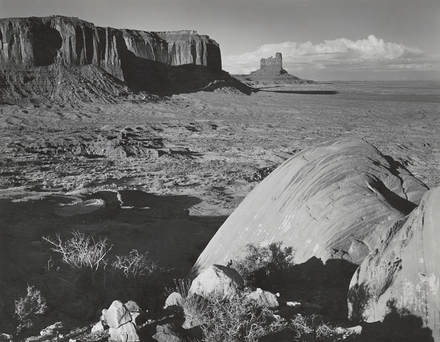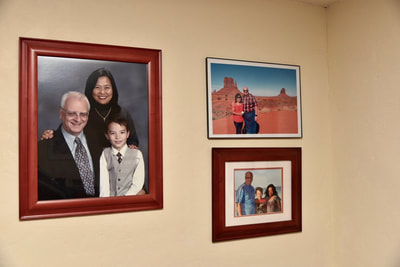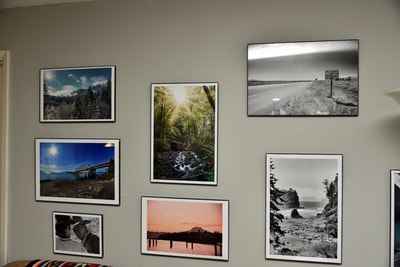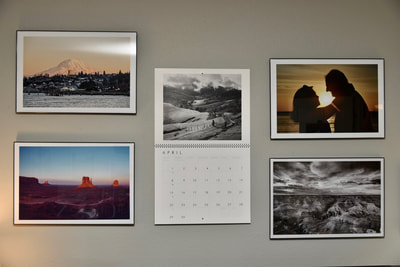 “Photography is more than a medium for communication of reality, it is a creative art.” -Ansel Adams It’s estimated that more than a trillion digital photos are taken every year. And the vast majority reside on our phones and other devices. All of us love to slide through Facebook, Instagram, or our Photos app and look at what’s there. And who doesn’t love a gorgeous “wallpaper” on our PC’s desktop? Perhaps an image such as Adams' classic image of Monument Valley Arizona? But, there is also something immensely satisfying with looking through a photo book, or a scrap book, or enlargements on a wall that is different than looking at a screen. It’s the difference between a “photo” and a piece of art. It is no secret that one of my personal “heroes” in photography is the legendary Ansel Adams. With a career that started in the 1920’s and really continues today (even though he passed away in 1984 his work lives on), Adams was probably the most famous and well known landscape and documentary photographer in the world. Best known for his work in black and white, he was a respected artist and his body of work remains one of the main reasons many consider photography to be a legitimate art form. Over the past few years, I have been exploring this artistic side pf photography. I have discovered that although having images on devices is convenient, there is something lacking … there is a depth and sense of scale that can only be experienced when looking at an image displayed on a wall. Adams knew this as well, and was a respected master printer. His gallery, located in his beloved Yosemite National Park, continues this heritage today. In reading one of his many books on photography, The Print, I have been reminded of my own darkroom work years ago. No matter how we create images digitally, there is one part of the photographic process that is missing. There was something absolutely magical about placing an exposed photographic paper in the developer fluid and seeing the image slowly appear. That few seconds of discovery really is one of the most important aspects of the photographic art … seeing something appear that captures a single moment in time for all to share. Adams said, “The fine print represents, to me, an expressive object of beauty and excellence. The difference between a very good print and a fine print is quite subtle and difficult, if not impossible, to describe in words. There is a feeling of satisfaction in the presence of a fine print - and uneasiness with a print that falls short of optimum quality. The degree of satisfaction or lack of it relates to the sensitivity and experience of the photographer and the viewer.” That feeling of satisfaction simply cannot be felt when looking at a digital screen. I have printed, and now display, a number of images in our home. Whether the subject is family or friends, or a particular location, each has an impact that far exceeds what happens when we look at a phone screen. There’s a sense of permanence that comes with each print that is completely missing from it’s digital counterpart. Join me in rediscovering the joy of photography as art in your home.
0 Comments
Years ago, when I first started getting serious in photography, I read and studied many of the works of perhaps the greatest landscape photographer of all times, Ansel Adams. His series of three books, The Camera, The Negative, and The Print were my primary study tools and although I would never say I equaled his knowledge and skill, I did learn a vast amount from his teachings.
Although written for “analog” cameras, film, negatives, and chemical printing processes, it is amazing how relevant his techniques and information are today. Simple replacing “negative” with “digital file” becomes an amazing trip through his artistic technique. Here are some excerpts, from this third book on printing, modified slightly for a contemporary audience. Photography is more than a medium for communication of reality, it is a creative art. Therefore, emphasis on technique is justified only so far as it will simplify and clarify the statement of the photographer's concept. The making of a print is a unique combination of mechanical execution and creative activity. It is mechanical in the sense that the basis of the final work is determined by the content of the digital file. However, it would be a serious error to assume that the print is merely a reflection of the pixels found in this file. The print values are not absolutely dictated by the digital file, any more than the content of the digital file is absolutely determined by the circumstances of subject matter. The creativity of the printing process is distinctly similar to the creativity of exposing proper images: in both cases we start with conditions that are "given," and we strive to appreciate and interpret them. In printing we accept the file as a starting point that determines much, but not all, of the character of the final image. Just as different photographers can interpret one subject in numerous ways, depending on personal vision, so might they each make varying prints from identical files. Thus the print is our opportunity to interpret and express the file’s information in reference to the original visualization as well as our current concept of the desired final image. We start with the digital file as the point of departure in creating the print, and then proceed through a series of "work" prints to our ultimate objective, the "fine print." The term "fine print" (or "expressive print" as I think of it) is elusive in meaning. The fine print represents, to me, an expressive object of beauty and excellence. The difference between a very good print and a fine print is quite subtle and difficult, if not impossible, to describe in words. There is a feeling of satisfaction in the presence of a fine print - and uneasiness with a print that falls short of optimum quality. The degree of satisfaction or lack of it relates to the sensitivity and experience of the photographer and the viewer. There appear to be people who are "value blind," just as there are people who are tone deaf. Practice and experience may overcome such deficiencies, at least to a degree, and the viewing of original fine prints is perhaps the best instruction. Ansel Adams, The Print Adam’s philosophy of turning your images into fine art are at the core of our organizational values. Because it is in the print that you can really appreciate the art inside your images in a way that you can never do looking at a computer screen. We look forward to helping you realize your personal vision that started the moment you pressed the shutter release on your camera. I have been involved with photography for a very long time. When I was a child, the first camera I can remember was a Kodak Brownie box camera which shot square negatives (120, I think). As time wore on, I upgraded a couple of times, finally having an Instamatic for quite a while.
Shortly after I joined the Air Force, one of my first purchases was my first 35mm film camera. After much research I found one that fit my needs as well as my budget … with budget being the operative word!! The camera was a Yashica Electro-35 GSM rangefinder. I don’t remember how much it cost, but I think it was somewhere around $75-100. This at a time when my take home pay was around $700 a month!! Although I upgraded several times over the years I had fond memories of the Electro 35 … and was pleased when I recently found one available on eBay. It featured some automation but was basically a “manual” camera. And I loved it. (Unfortunately, over the years most of those pictures have vanished so I can’t share any examples!!) Next I moved to a Single-Lens Reflex (SLR) and since most of the “professionals” at the time used Nikon’s, I had to have one as well. My first was a Nikkormat (as it was the least expensive), and over the years I steadily moved up to newer, and more capable, models. The last film camera I had was a Nikon FA which I had while stationed in Japan and most of my photos from that period are courtesy of that camera. The FA was also the camera that accompanied me when I was helping a photojournalist (Michael Stanley), who lived in Tokyo, complete a spectacular photo book about the USAF and Japanese Air Self Defense Force. Standing next to Michael as he worked on his book gave me essentially a Master’s Degree in photography, and I only wish I had better quality digital versions of many of those images. Today, I use my iPhone and a Nikon D750 for my photography. I find using the iPhone is a lot like my old Yashica rangefinder … fixed lens and somewhat limited choices for aperture/exposure control but easy to carry and great image quality. But, the D750 is my main workhorse. The images are stunning!! Every time I use either of these technical marvels, I cannot help but wish I could somehow go back in time and use them to capture places, people, and events, that were important in my life. Dang! |
Ken St JohnAnd now, a few words from Ken about photographic arts. Archives
April 2018
Categories |




 RSS Feed
RSS Feed
